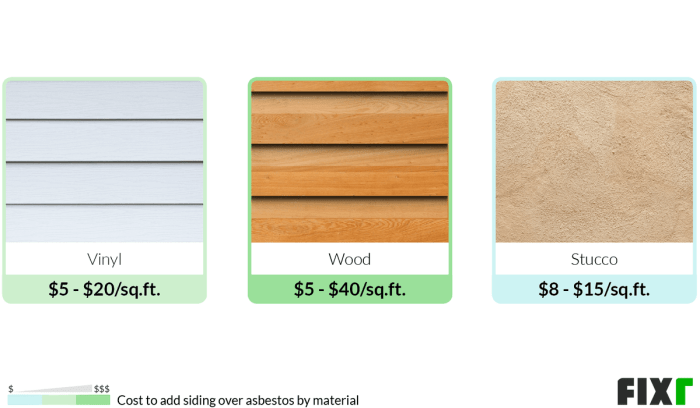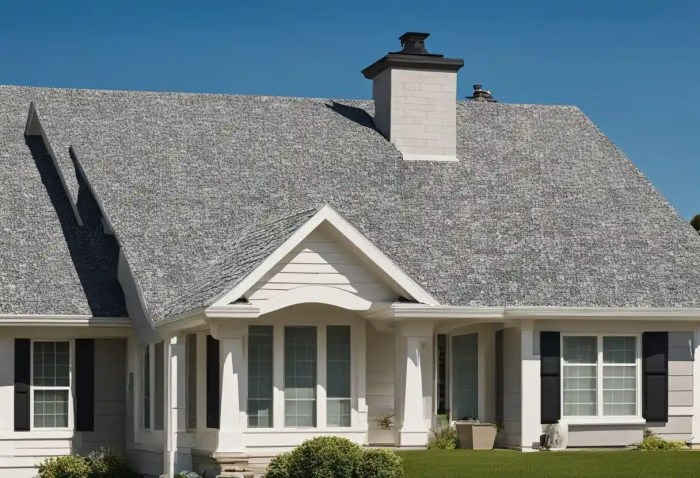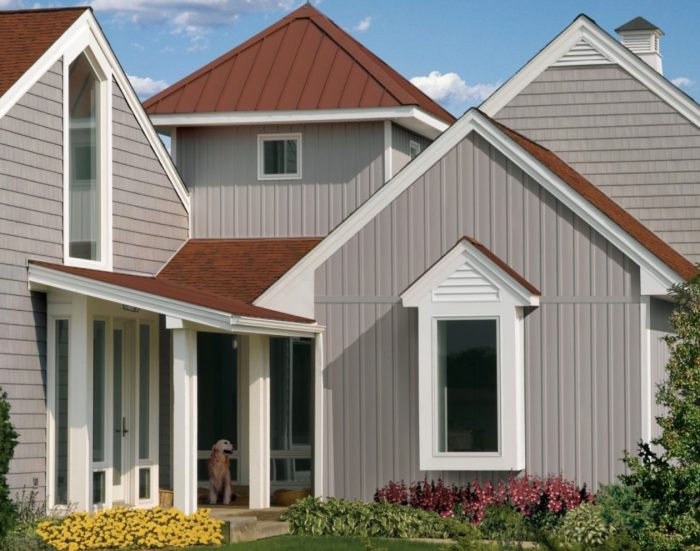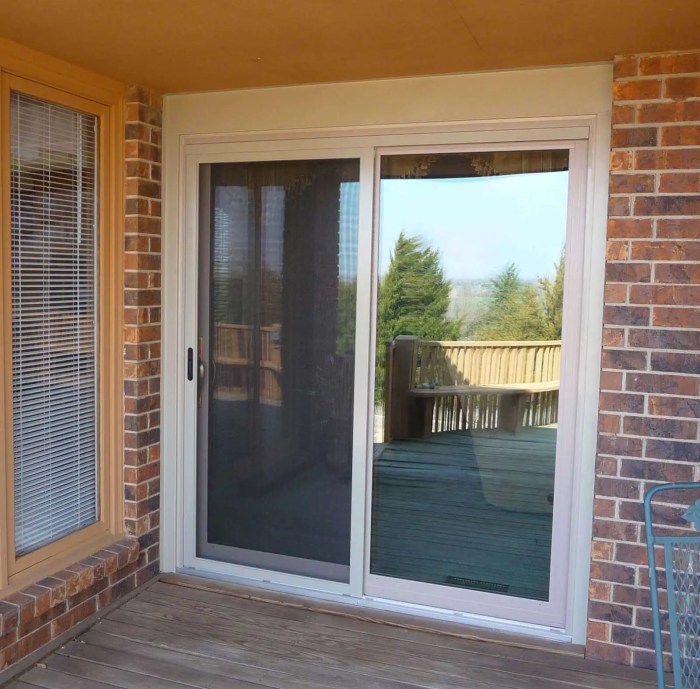Cost to Put Vinyl Siding Over Asbestos Shingles: A Comprehensive Guide
Exploring the costs associated with putting vinyl siding over asbestos shingles brings to light important considerations that homeowners should be aware of. From materials to labor expenses, this guide delves into the financial aspects of this renovation project, offering valuable insights for those looking to undertake such a task.
As we delve deeper into the breakdown of costs and comparisons with other siding options, readers will gain a clearer understanding of the financial implications and benefits of choosing vinyl siding over alternatives.
Factors to Consider Before Installing Vinyl Siding Over Asbestos Shingles
Before embarking on the project of installing vinyl siding over asbestos shingles, there are several crucial factors that need to be taken into consideration to ensure a successful and safe outcome.
Assessing the Condition of the Asbestos Shingles
It is essential to thoroughly inspect the current condition of the asbestos shingles before proceeding with the installation of vinyl siding. Any signs of damage, deterioration, or wear and tear must be addressed appropriately to prevent any issues in the future.
Checking Local Regulations and Building Codes
Before starting the project, it is important to check with local authorities regarding regulations and building codes related to asbestos removal and siding installation. Compliance with these regulations is crucial to avoid any legal implications and ensure the safety of the residents.
Hiring a Professional Contractor
Given the potential health risks associated with asbestos and the technical expertise required for proper installation, it is highly advisable to hire a professional contractor with experience in handling asbestos and vinyl siding projects. A qualified contractor will ensure the work is done correctly and safely, providing peace of mind for the homeowners.
Cost Breakdown of Installing Vinyl Siding Over Asbestos Shingles
When considering the cost of installing vinyl siding over asbestos shingles, it's essential to break down the expenses involved. This breakdown typically includes materials cost, labor costs, and any additional expenses related to the process.
Materials Cost for Vinyl Siding
The materials cost for vinyl siding can vary depending on the quality and brand of the siding chosen. On average, homeowners can expect to pay between $2 and $7 per square foot for vinyl siding materials. This cost includes the siding panels, trim pieces, corner posts, and other necessary components for the installation.
Labor Costs for Installation
The labor costs associated with installing vinyl siding over asbestos shingles can also fluctuate based on factors like the size of the project, location, and contractor rates. On average, homeowners can anticipate labor costs ranging from $1.50 to $4.50 per square foot.
This cost covers the installation of the vinyl siding, removal of the old asbestos shingles, and preparation of the surface.
Disposal of Asbestos Shingles
An additional cost to consider when installing vinyl siding over asbestos shingles is the disposal of the old shingles. Due to the hazardous nature of asbestos, proper disposal is crucial. Homeowners can expect to pay anywhere from $1,000 to $3,000 for the safe removal and disposal of asbestos shingles, depending on the amount of material and local regulations.
Comparison of Vinyl Siding Installation Costs with Other Siding Options
When considering siding options for your home, it's essential to compare the installation costs of vinyl siding with other materials such as wood or fiber cement. Understanding the long-term cost implications and cost-effectiveness of vinyl siding is crucial in making an informed decision.
Cost Comparison with Wood Siding
Wood siding is a popular choice for its natural aesthetic appeal, but it comes with a higher price tag compared to vinyl siding. While the initial cost of wood siding installation may be more expensive, it is important to consider the long-term maintenance costs.
Wood siding requires regular painting, staining, and sealing to maintain its appearance and protect it from the elements. In contrast, vinyl siding is virtually maintenance-free, requiring only occasional cleaning to keep it looking new. This difference in maintenance requirements can result in significant cost savings over time.
Cost Comparison with Fiber Cement Siding
Fiber cement siding is known for its durability and resistance to rot, fire, and pests. However, the installation cost of fiber cement siding is higher than that of vinyl siding. Additionally, fiber cement siding may require repainting over time, adding to the long-term maintenance costs
Vinyl siding, on the other hand, retains its color and finish without the need for repainting, making it a cost-effective option in terms of maintenance.
Cost-Effectiveness of Vinyl Siding
Vinyl siding is a cost-effective choice for homeowners looking for a durable and low-maintenance siding option. While the initial installation cost of vinyl siding may be lower than other materials, its long-term cost-effectiveness lies in its minimal maintenance requirements. With vinyl siding, you can save on painting, staining, and sealing costs over the years, making it a budget-friendly choice in the long run.
Benefits and Drawbacks of Putting Vinyl Siding Over Asbestos Shingles

When considering the option of installing vinyl siding over asbestos shingles, it is important to weigh the benefits and drawbacks associated with this choice.
Advantages of Using Vinyl Siding
- Vinyl siding offers a wide range of colors and styles, allowing homeowners to customize the aesthetic of their property.
- It is a cost-effective option compared to other siding materials, making it a budget-friendly choice for renovations.
- Vinyl siding is low maintenance and does not require painting, saving time and money on upkeep.
- It can improve energy efficiency by providing an additional layer of insulation to the home, reducing heating and cooling costs.
Potential Drawbacks
- Moisture can become trapped between the layers of vinyl siding and asbestos shingles, leading to mold and rot if not properly addressed.
- Installing vinyl siding over asbestos shingles can hide potential damage or issues that may arise in the future, requiring removal of both layers for inspection.
- In some cases, the added weight of the vinyl siding can put stress on the existing structure, especially if the asbestos shingles are deteriorating.
Tips for Mitigating Risks
- Ensure proper ventilation to prevent moisture buildup between the layers by adding vents or gaps during installation.
- Inspect the asbestos shingles for any signs of damage or wear before proceeding with vinyl siding installation to address any underlying issues.
- Consult with a professional contractor to assess the structural integrity of the property and determine if additional support is needed to accommodate the weight of the new siding.
Summary

In conclusion, the decision to put vinyl siding over asbestos shingles involves careful planning and consideration of various factors. By weighing the costs and benefits Artikeld in this guide, homeowners can make informed choices that align with their budget and aesthetic preferences.
FAQ Summary
What factors should I consider before installing vinyl siding over asbestos shingles?
Before proceeding, it's crucial to assess the condition of the asbestos shingles, check local regulations, and hire a professional contractor for the job.
How does the cost breakdown of installing vinyl siding over asbestos shingles look like?
The breakdown includes materials cost for vinyl siding, labor expenses, and any additional costs like asbestos shingle disposal.
What are the benefits and drawbacks of putting vinyl siding over asbestos shingles?
Vinyl siding offers advantages in aesthetics and energy efficiency, but drawbacks may include moisture trapping between layers. Mitigate risks by following proper installation guidelines.




